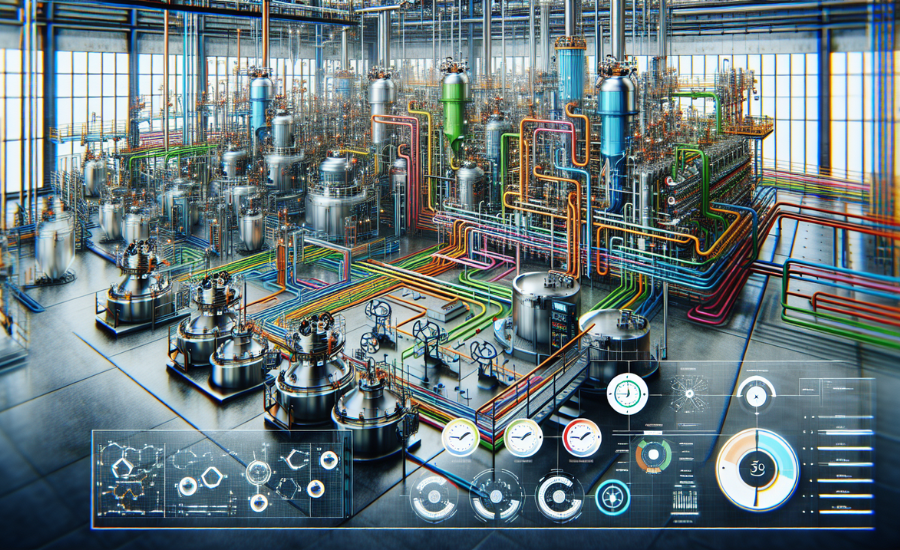For industries relying on chemical processes, even a minor deviation in precision can lead to inconsistent yields, increased waste, and compliance headaches. This is why improving efficiency in chemical processes is more critical today than ever before. This post explores the challenges industries face, the latest technologies driving precision, and actionable steps to elevate efficiency in chemical operations.
Current Challenges in Chemical Processes
Before we jump to solutions, it’s crucial to recognize the challenges industries are grappling with.
1. Resource Consumption
Chemical processes often demand significant amounts of raw materials and energy. Inefficient processes lead to waste, driving up costs and harming the environment.
2. Exacting Regulatory Requirements
From pharmaceuticals to food chemicals, regulatory compliance is non-negotiable. Navigating these standards while maintaining consistent precision can be overwhelming.
3. Technological Gaps
Many facilities still rely on outdated technology, incapable of delivering the desired precision and efficiency. Limited capacity for automation and data analysis further adds to inefficiencies.
4. Economic Pressures
Rising costs in raw materials, labor, and manufacturing highlight the need for enhanced efficiency to safeguard profitability.
New Technologies Fueling Precision and Efficiency
Advancements in technology have paved the way for a new era of chemical processes.
1. Advanced Process Controls (APC)
APC leverages real-time data to monitor and optimize chemical reactions. Through algorithms and machine learning, it adjusts variables like temperature, pressure, and feed rates to achieve consistent results.
2. Use of Stainless Steel Reactors
While often taken for granted, the employment of stainless steel reactors plays a pivotal role in precision and efficiency. Their ability to resist corrosion and withstand high-pressure environments ensures durability, reducing downtime and long-term expenses.
3. IoT and Smart Sensors
Smart sensors integrated with IoT networks provide granular-level monitoring of processes. These sensors measure critical parameters like pH, temperature, and viscosity and feed the data into predictive analytics models for optimized conditions.
4. Simulation and Modeling Tools
Simulation software enables engineers to predict how chemical systems respond under various conditions. Armed with these insights, facilities can deploy optimized processes without expensive trial-and-error phases.
Integrating Precision into Chemical Processes: A Step-by-Step Guide
Improving precision and efficiency shouldn’t be seen as an overwhelming task. By breaking it into smaller, actionable steps, any organization can streamline its chemical operations.
Step 1. Audit Existing Processes
Begin by conducting a comprehensive audit. Identify inefficiencies tied to prolonged reaction times, material wastage, or equipment failures. Document all areas where precision can be improved.
Step 2. Leverage Data Analysis
Collect historical and real-time data from chemical processes. Use analytics tools to pinpoint patterns and anomalies.
Step 3. Pilot and Experiment
Before initiating sweeping overhauls, test precision methodologies on a smaller scale. Focus on applying single process improvements, such as automating one chemical batch line to gather measurable insights.
Step 4. Conduct Cost-Benefit Analysis
Precision upgrades can require upfront investment. Assess the costs of new equipment, technology, or process adjustments against expected savings in resources, efficiencies, and compliance penalties.
Step 5. Invest in Employee Training
Even the best processes can falter without a skilled workforce. Provide employees with access to training on advanced methodologies such as operating smart technologies or maintaining key components.
Step 6. Adopt Predictive Maintenance
Equipment failure is one of the most significant causes of downtime. Predictive maintenance, powered by AI and IoT, ensures potential issues are identified and resolved before they disrupt operations.
Step 7. Commit to Continuous Improvement
Precision-led efficiency is not a one-time achievement. Establish protocols for regularly evaluating and refining processes as more data becomes available or as technology evolves.
The Future of Precision in Chemical Processes
The pursuit of precision is far from static—it’s a constantly evolving field. Here’s a glimpse of what lies ahead for precision in chemical processes.
1. AI-Driven Optimization
AI will soon play an even larger role in optimizing chemical processes, with systems capable of learning and adjusting in real time to maximize precision.
2. Green Chemistry
The precision of the future will focus on sustainability. Expect an emphasis on eco-friendly reactions, resources, and waste management protocols that align with global environmental goals.
3. Advanced Materials
From reactors to sensors, cutting-edge materials like graphene will enhance equipment durability and enable more precise processes.
4. Enhanced Collaboration
Collaboration between industries and academic researchers will accelerate the adoption of advanced methodologies, ensuring industries stay ahead of the curve.
Conclusion
Precision in chemical processes doesn’t just improve operational performance; it builds resilience against unexpected challenges and opens doors to innovation. By leveraging emerging technologies and following structured steps toward improvement, businesses can stay competitive, compliant, and sustainable.
Stay informed and up-to-date by staying in touch with us regularly: Nhentainef!
